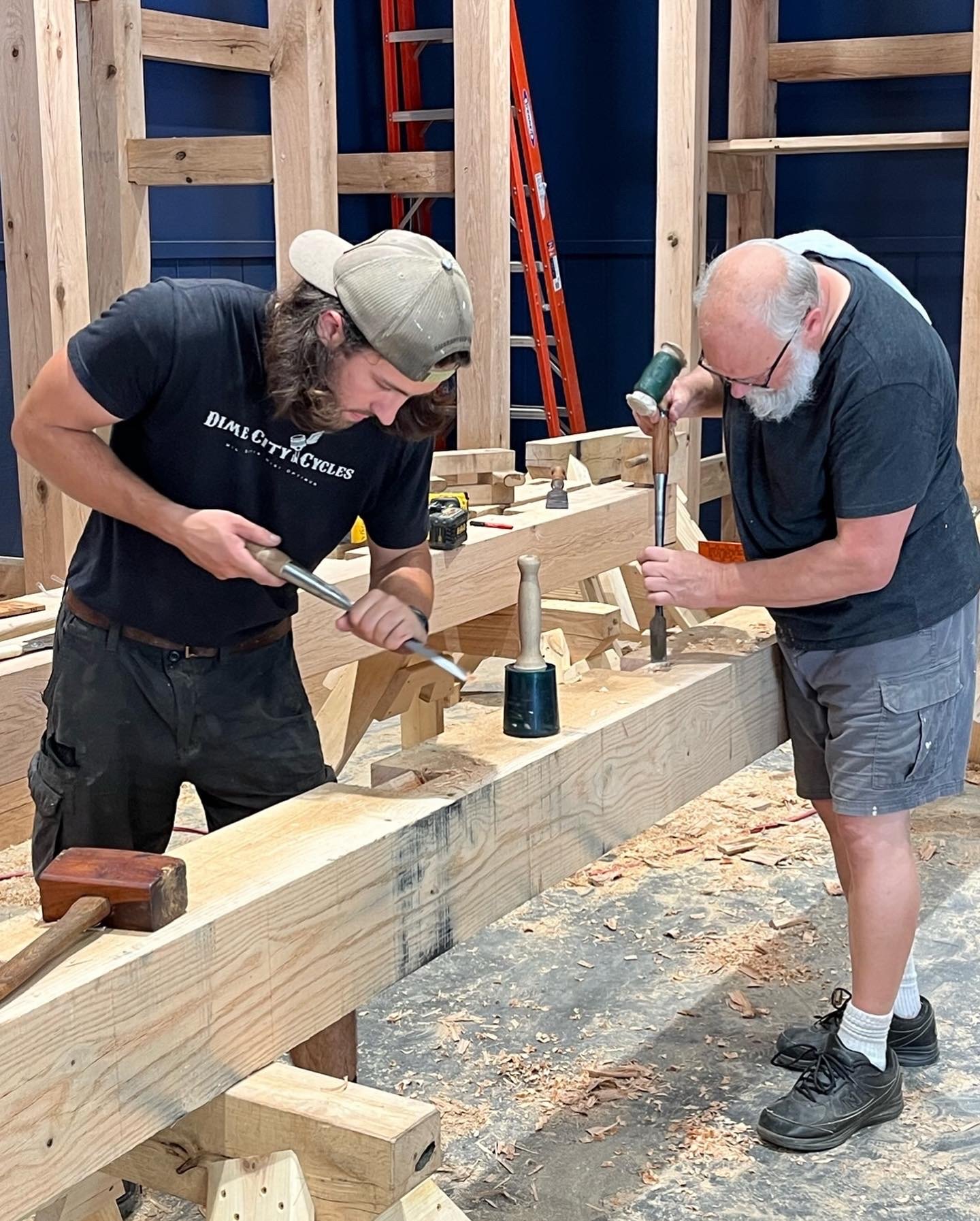Shop-by-hand: Cutting the timbers.










For a little over a year I’ve had the seemingly unattainable desire laid heavy on my soul: to host a old-world timber frame build and raising for my family and friends. June of 2023 saw the unlikely fulfillment of this aspiration, and in an exhausting but memorable two weeks, I cut and raised a 12’x16’ timber frame with the help of friends and family.
The principal motivation was to organize a project for my community that would make real in our lives the proposition that another work is possible. A work that is fun, beautiful, practical; which unites those involved and encourages a virtuous full-bodied engagement in the task at hand. Nor was I content to think this may be possible theoretically, somewhere else, at special schools, or for those with tons of money. I wanted to bring about this kind of work in the world I inhabit, literally in my backyard, with the people close to me, and an order of magnitude less than money than “tons” . So with a hope and a prayer, a budget of a few thousand dollars, two weeks time, untrained help, a backyard in a rundown Ohio steel town, and a dedication to St. Joseph the worker, we made the necessary commitments to see if we could raise a timber frame by hand.
In early March, I was invited to join a local timber framing startup and I jumped on the chance. We built two 21’ long 12’ high wood storage shelves, the first with only hand tools and the second with help from power tools. At the end of the project, I was presented with a generous opportunity: access to the tools and space to timber frame if I could cover material costs and (the real catch) I could be out of the shop in two weeks as the space was needed by the owner. With the little money I had made from the shelving project, I turned around and ordered enough green red oak for a 12x16 shop and committed to the project, trusting in providence that all the necessary pieces would come together.
The next two weeks were a whirlwind of work and planning. I called my family, and they all agreed to travel several states, sleep on floor mats, take meals in rocking chairs, and work long, hard days to see it through. I scheduled a raising, invited everyone in town I could think of, then buckled down to work of unloading and moving timbers, cutting all the joinery, pouring a foundation, in the hope that come day 14, we would have the frame raised .
I spent the first week cutting the sills, posts, braces, and tie beams. Braces excepted, these were all 8”x8” components, and it was no small effort to wrestle them into finished timbers working alone. I was sustained in my efforts by kindly friends who knew what I was doing and wanted to support it: and would periodically drop by with food, or to help lift a timber on/off sawhorses. The arrival of my family at the beginning of the second week was an exciting benchmark; I had cut half the frame practically solo, and we now had seven people to finish the second half! True, none of them had built a structure before, much less timber framed one. But they picked it up quickly. It is a testament to the human scale and fittingness of the tools and work of timber framing that complete novices can become useful in so short a time. Making pins at a shave horse, riving log blanks, running a mortiser, chopping reductions, spokeshaving rafter swoops, chamfering tenons and handling edges, these are all essential tasks that can be competently performed by a novice who is willing to learn. In one day we cut all the joists and girts. In another, we cut the rafters. In a third, we moved all the wood to my lot and cut both top plates. Over three days, three brothers who had never so much as seen a draw knife, split log rounds, rived blanks, and made over 100 pins in their off-time. To build in this way is to build in a way that invites the involvement of the whole community. From the children, who are the perfect size for pin making, to the elders, who lend valuable insight and guidance, the process is totally inclusive; there is no arbitrary invovlement.
We worked late every night, and were always ready for meals when they came. But there was still time in the day to enjoy a morning coffee or evening beer, and the feeling of growing competence together with our progress made for a convivial atmosphere. Naturally, we had our share of frustrations with the work and with each other, but these passed with an apology and a quick step back to gather ourselves. It was good to be working together on a worthwhile project. True, we had the ambitious goal of raising by the end of the week, but within the context of the far more important goal of learning to work well together such that good work was indistinguishable from good fun.
Work in the background, play in the foreground: a not-so-subtle visual metaphor.

